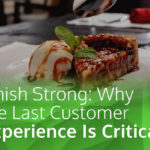You have customers. But do you have fans?
Customers buy from you. Fans are your marketing secret weapon. So how do you build your fan base?
It’s all about connection. People who feel connected to your brand become fans—even if they’ve never bought from you. While you need to consider conversions, remember that fans are potential conversions plus they help you get your products and services in front of more people.
Brand Strategy 1: Make Them Feel Special
Giving bonuses and special offers to loyal customers often pays off. You want people who buy from you to feel special and have incentive to come back and buy again. But what about people who haven’t bought from you? As you develop your fan base, you’ll have people who are engaged with your brand, but haven’t bought from you. You want them to feel special too. Think VIP offers, membership in online groups. Keep your fans in the loop about offers, new products, events. Even if they don’t buy, they’ll share.
Brand Strategy 2: Build Community
You’ve heard the adage: People don’t buy from businesses, they buy from people. That’s why you want your brand tied to community.
Online groups are a great way to facilitate community building. Make it entertaining and interactive. Polls, quizzes, questions and challenges to share photos or videos get people engaged—and make it easy to share.
Pet food companies run pet of the week photo ops. A small bike shop asks fans to share their favorite place to ride or share helmet cam video. The local pizza place takes a poll about new toppings to offer (enter for a chance to win a free pie).
But what about businesses that are less prone to enthusiasm? How about letting customers vote on where to to give a bank’s community donations? Or an office supply company that creates a virtual water cooler with pictures of weekend warriors, videos riffing on the latest TV series, and their own Monday morning quarterbacks.
But what about the sale? People like coming to your site, they start to trust you. Start there.
Brand Strategy 3: Be Informative (but Don’t Make It All about You)
Getting people back to your web site or your Facebook page again and again builds brand awareness and gives you more opportunities to put your product or service in front of them. If you think being informative is just about product descriptions, think again. Here are three ways to engage by sharing information:
Blogging. You share information relevant to your business. A disability coach might blog about getting ready for an IEP meeting, how the language we use to talk about disability matters, and success stories of overcoming barriers. Some blog posts simply build confidence and give value; others have a call to action to buy a service or set up a free consult.
Website or Social Media. Use a Resources page or a sidebar on your web site or various social media channels to share updates. A surf shop posts local weather and surf conditions. A farm stand keeps an updated list of what’s in season. A mechanic offers traffic reports, tips on parking for local events, and seasonal checklists for making sure your car is running great. The key here is regular updates.
Customer Input. That farm stand might ask fans for favorite recipes for a particular veggie. The mechanic can set up a space for fans to report traffic back ups or create a road trip playlist. It’s not a direct route to sales, but it does build your brand and your fan base. So when somebody realizes they need help you with an issue related to a disability or their family wants to go pick berries or their car breaks down and they need to decide on the side of the road where to tow it . . . they’ve got an idea where to go. And if they don’t need your services, but a friend does, they mention your business.
Brand Strategy 4: Be Consistent and Creative
A special offer here, a Facebook post there isn’t going to cut it. A big offer may get people to your site or to connect with you through social media, but for it to matter, you need to give them reasons to come back. Strategies 1–3 are about giving people reasons to come back.
Being consistent doesn’t mean getting in a rut. Hint: Posting the same question every Monday morning isn’t going to engage fans. It means posting regularly. Have a plan for your blog—how often and when you post. Set up a schedule of planned posts. Have a system for updating information and resources on your site so it doesn’t get tired or out of date. Brainstorm new questions, quotes, shares, or other ideas to get people engaged in social media. And keep watching what’s working so you know what to do more of.
None of these strategies is about direct selling, but they are part of your long game. Marketing strategy isn’t just be about lead generation or reaching sales goals. Your marketing strategy needs to include brand strategies to develop raving fans. Repeat business and help spreading the word? It’s a win-win.






